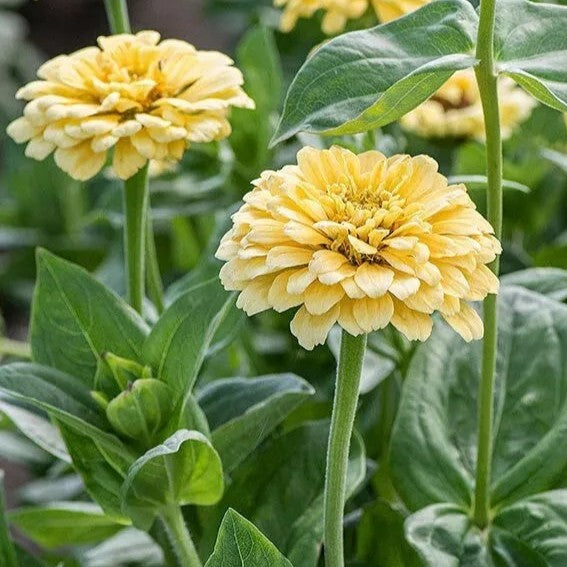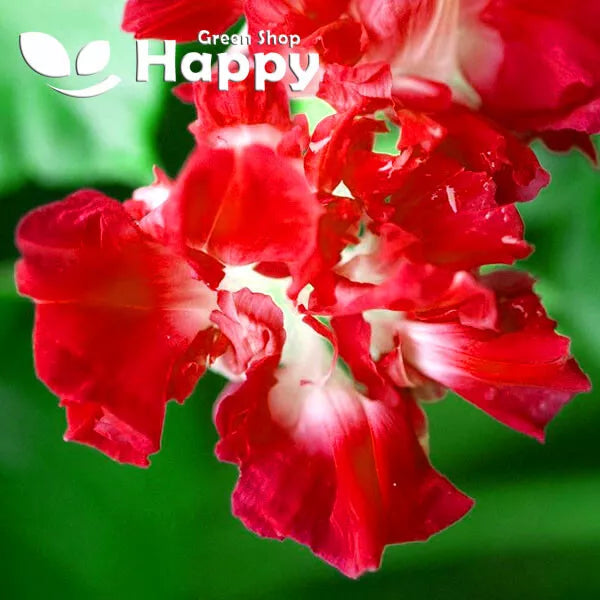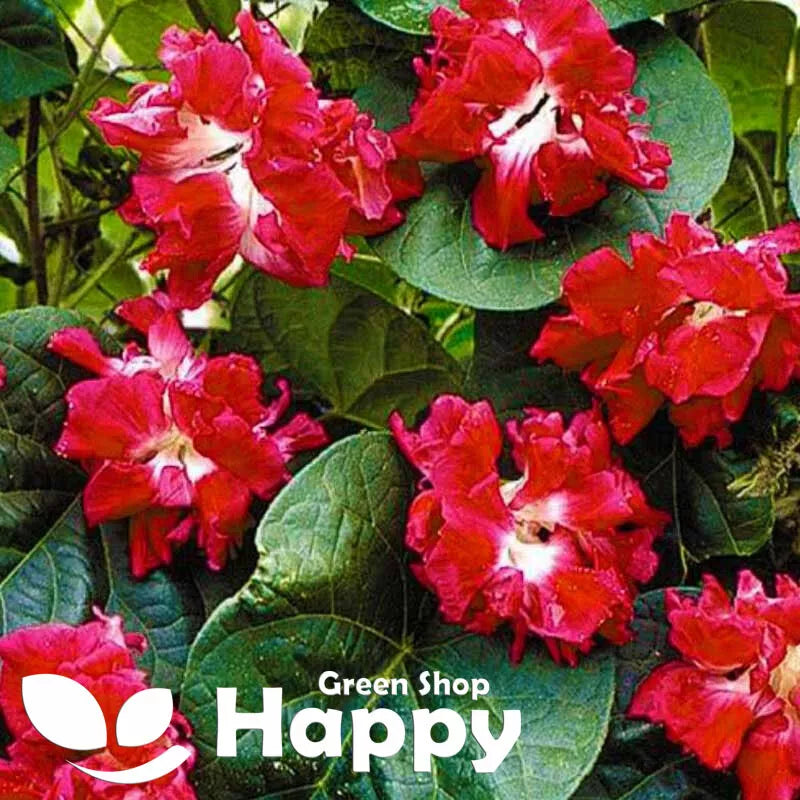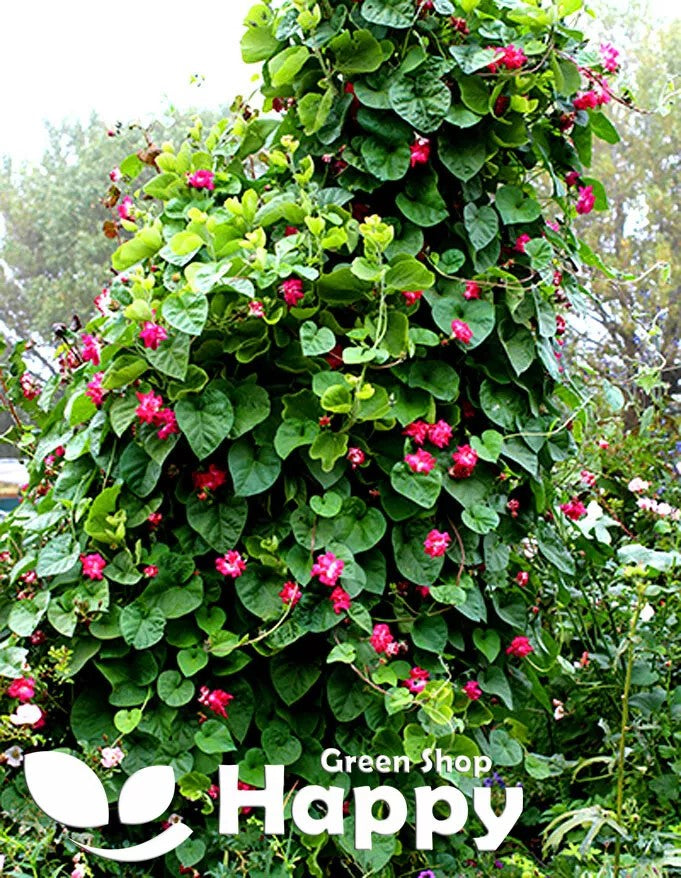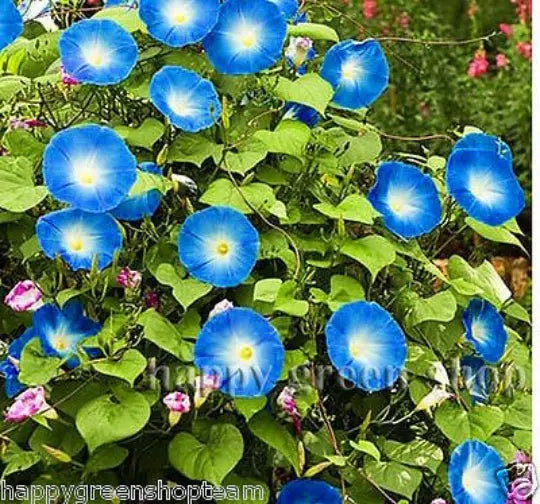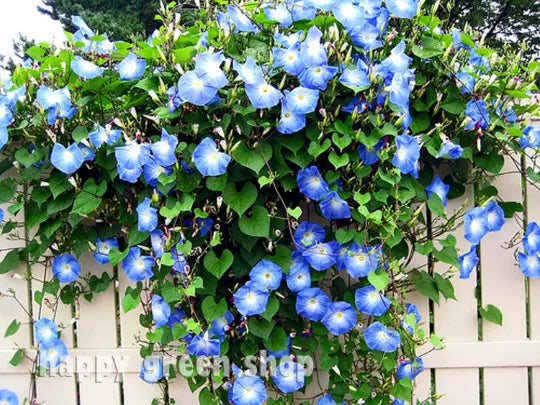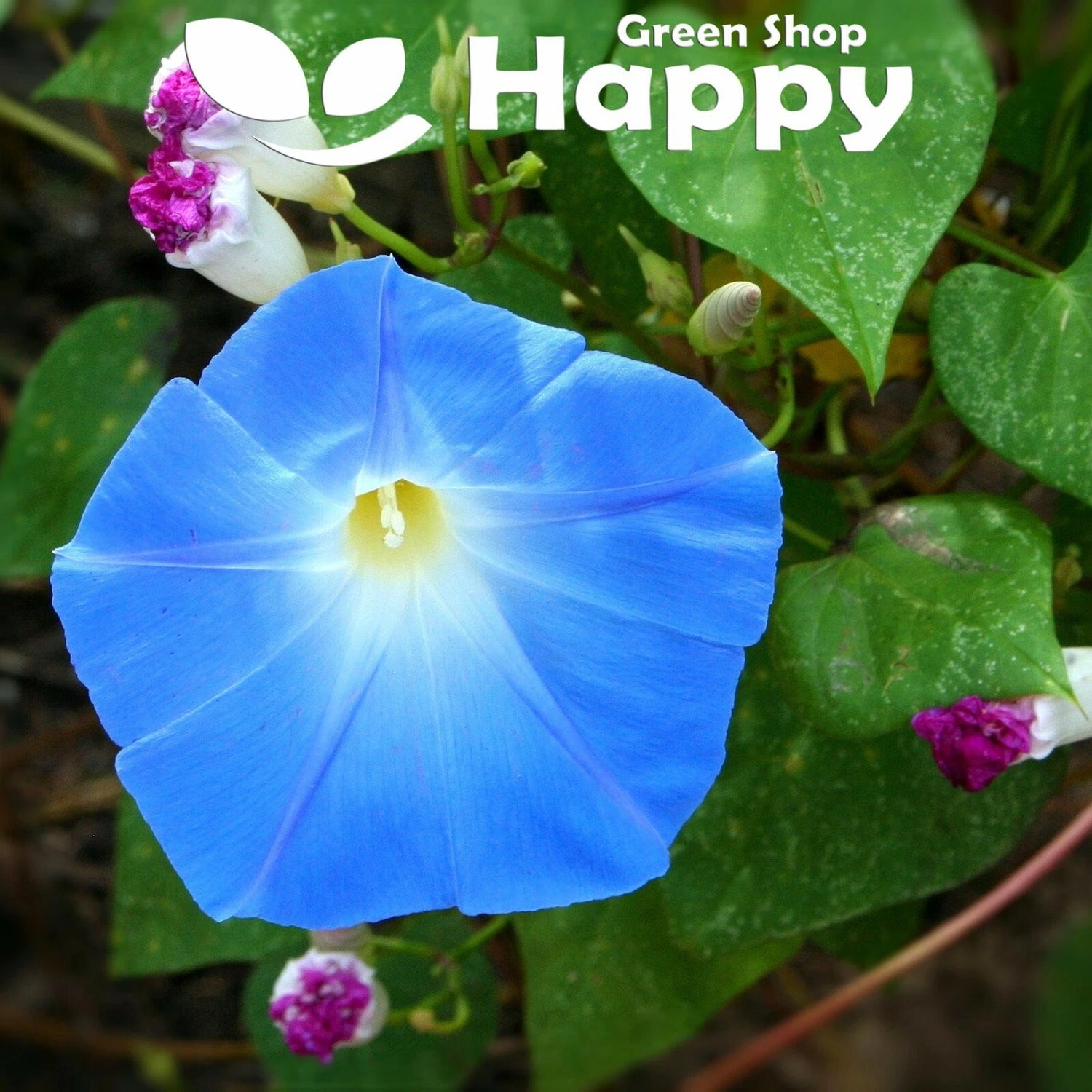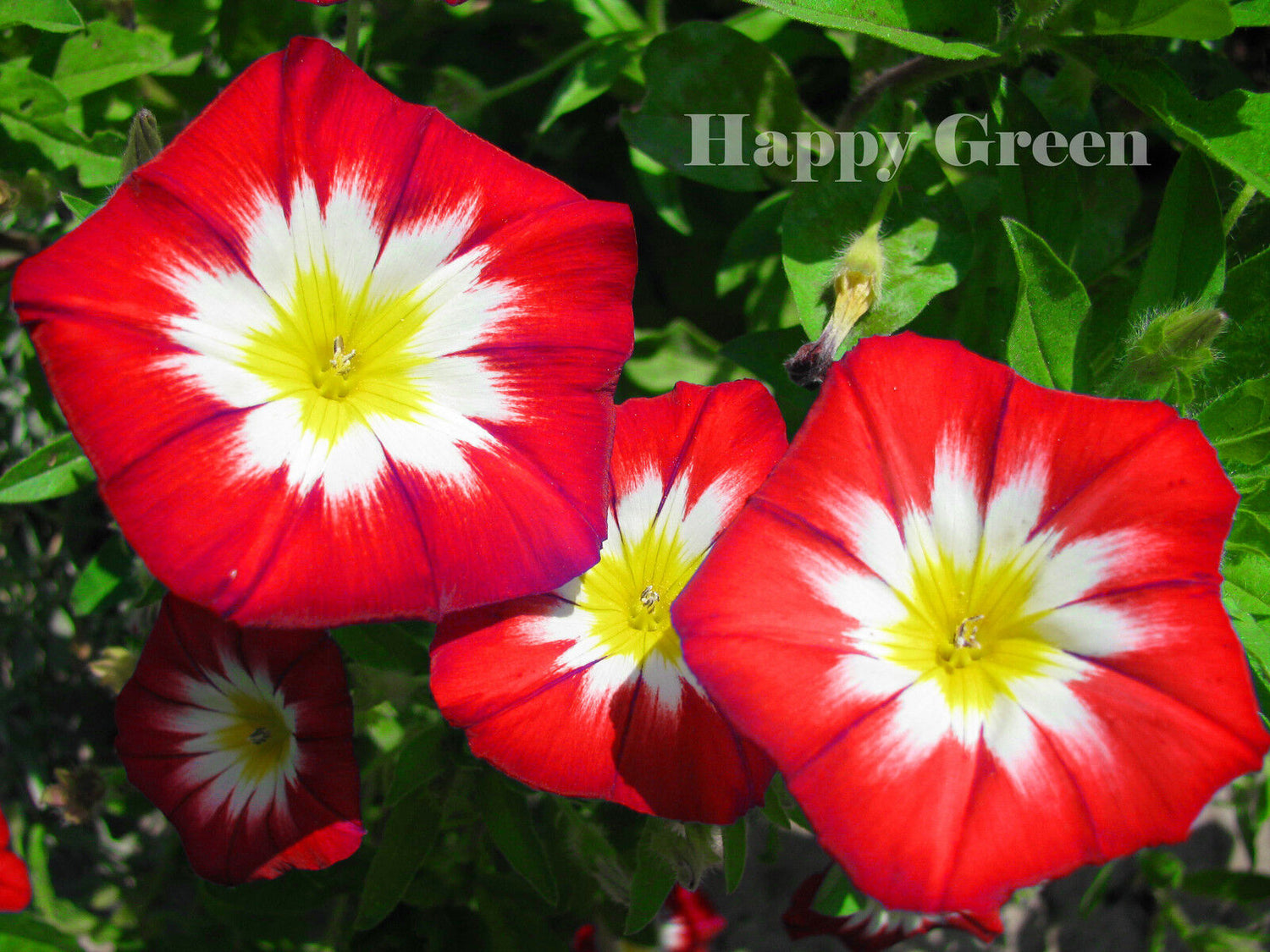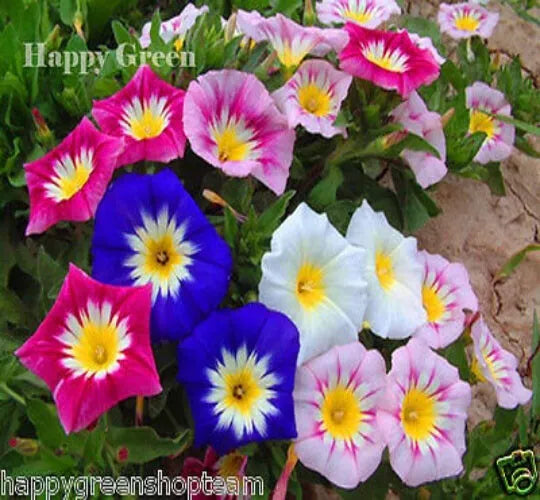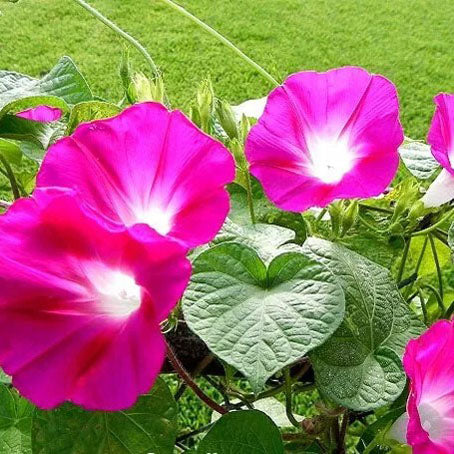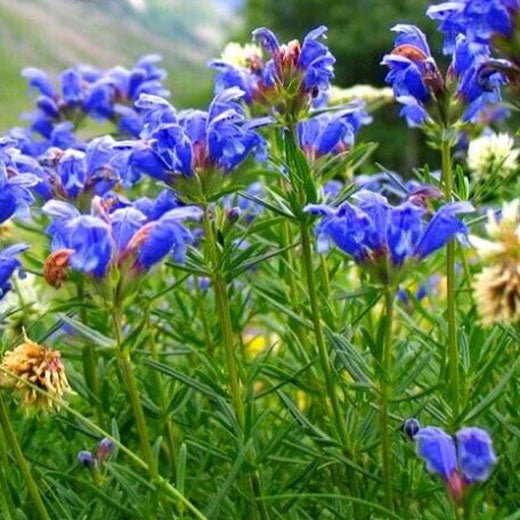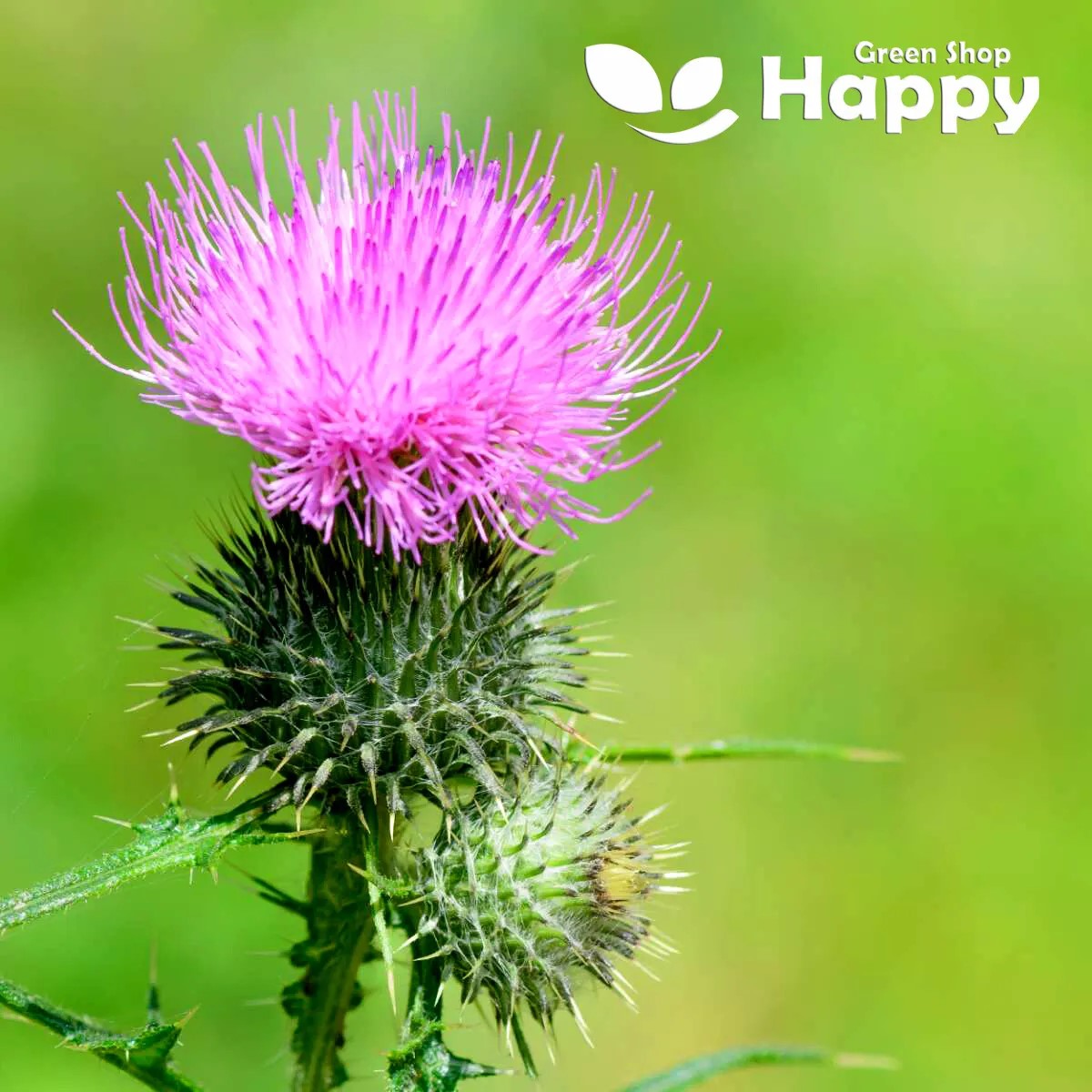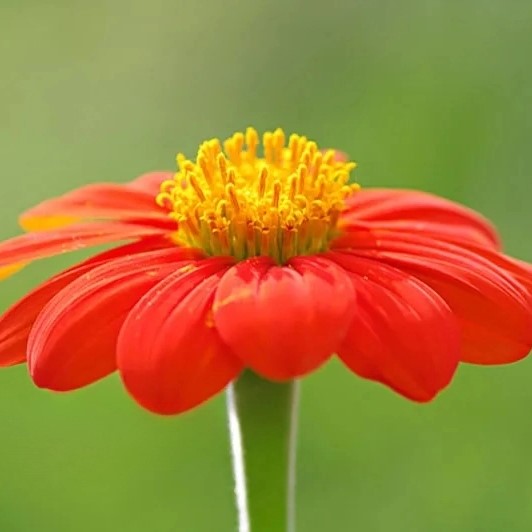Sort by:
326 products
326 products
Morning Glory ‘Ruffle Red’ – 5 Seeds
(Ipomoea imperialis)
The Morning Glory ‘Ruffle Red’ is a stunning and unusual climber with rich, velvety red blooms and beautifully ruffled, frilled petals. This variety combines the classic vigour of Morning Glories with a more exotic flower form, making it a real highlight in the garden. Its lush heart-shaped foliage and continuous summer display make it ideal for covering fences, arches, pergolas, and trellises.
Key Features
-
Type: Annual climber
-
Height: 2–3 m
-
Spread: 30–40 cm
-
Flowering: July–October
-
Position: Full sun / partial shade
-
Soil: Fertile, well-drained
Ideal For
-
Adding a dramatic splash of red to vertical spaces
-
Fences, arches, trellises, and pergolas
-
Large containers with supports
-
Cottage gardens and exotic planting schemes
Sowing & Growing
-
Sow indoors: March–April in pots or trays
-
Sow outdoors: May–June, after the last frost
-
Pre-treatment: Nick or soak seeds 12–24 hours before sowing
-
Germination: 7–14 days
-
Plant spacing: 30–40 cm
-
Provide strong support for climbing stems
-
Deadhead to prolong flowering
Morning Glory 'Heavenly Blue' Seeds (Ipomoea tricolor)
Morning Glory 'Heavenly Blue' is a vigorous climbing annual known for its large, trumpet-shaped, sky-blue flowers with a bright white throat. Its rapid growth makes it ideal for trellises, fences, arches, and containers. Loved for its breathtaking color and fast coverage, it adds vertical beauty and charm to any garden.
What Makes It Special
-
Large sky-blue trumpet-shaped flowers with a white throat
-
Fast-growing climber ideal for vertical displays
-
Long-flowering from summer to autumn
-
Attracts pollinators like bees and butterflies
Key Features
-
Botanical name: Ipomoea tricolor
-
Variety: 'Heavenly Blue'
-
Seed count: Approx. seeds per pack
-
Height/Spread: Climbs 2–3 m; spread depends on support
-
Position: Full sun; fertile, well-drained soil
-
Flowering period: July–October
Ideal For
-
Trellises, fences, arches, and pergolas
-
Containers with support for vertical growth
-
Pollinator-friendly gardens
-
Adding dramatic color to summer and autumn gardens
Sowing Instructions
-
When to sow: February–April indoors; March–May outdoors
-
How to sow:
-
Scarify or soak seeds overnight for faster germination
-
Sow seeds 1–2 cm deep in pots or seed trays
-
Germination occurs in 7–14 days at 20–25°C
-
-
Transplanting: Plant outdoors with support after frost
-
Care: Water moderately; provide trellis or support; pinch tips for bushier growth
Morning Glory ‘Ensign Red’ – Seeds (Convolvulus tricolor)
The Morning Glory ‘Ensign Red’ is a stunning dwarf variety of Convolvulus tricolor that produces bright crimson-red trumpet-shaped blooms with golden-yellow throats. Unlike climbing morning glories, this compact type forms neat, bushy plants that flower profusely throughout summer. Its vibrant, bold red flowers bring instant color to beds, borders, and containers.
What Makes It Special
-
Rare red-flowered dwarf morning glory
-
Non-climbing and compact, ideal for small spaces
-
Blooms heavily through summer with minimal care
-
Perfect for creating striking bedding displays
Key Features
-
Botanical name: Convolvulus tricolor
-
Variety: Morning Glory ‘Ensign Red’
-
Seed count: Approx. seeds per pack
-
Height/Spread: 20–30 cm tall, spreading 25 cm
-
Position: Full sun; prefers well-drained soil
-
Flowering period: Summer to early autumn
Ideal For
-
Bedding and border displays
-
Patio pots and window boxes
-
Rock gardens and sunny edges
-
Adding bold red accents to summer gardens
Sowing Instructions
-
When to sow: March–May indoors, or April–June outdoors after frost
-
How to sow:
-
Sow seeds 0.5 cm deep in trays or directly in garden soil
-
Keep soil moist until germination (7–14 days)
-
Needs warmth and sun to thrive
-
-
After germination:
-
Thin seedlings to 20–25 cm spacing
-
Pinch back young growth for bushier plants
-
Morning Glory ‘Ensign’ Mixed – Seeds (Convolvulus tricolor)
The Morning Glory ‘Ensign’ Mixed is a compact, dwarf variety of Convolvulus tricolor that produces a cheerful mix of blue, white, and pink trumpet-shaped blooms with bright yellow centers. Unlike climbing morning glories, this variety forms neat, bushy plants that are ideal for bedding, borders, and containers. Its vivid flowers open in the morning sun and provide an eye-catching display all summer long.
What Makes It Special
-
Compact, non-climbing morning glory variety
-
Striking tricolor blooms in blue, white, and pink with golden centers
-
Long-flowering, hardy, and easy to grow
-
Perfect for containers, borders, and mass planting
Key Features
-
Botanical name: Convolvulus tricolor
-
Variety: Morning Glory ‘Ensign’ Mixed
-
Seed count: Approx. seeds per pack
-
Height/Spread: 20–30 cm tall, spreading 25 cm
-
Position: Full sun; well-drained soil
-
Flowering period: Summer to early autumn
Ideal For
-
Bedding displays and borders
-
Patio containers and window boxes
-
Rock gardens and sunny spots
-
Seasonal pollinator-friendly gardens
Sowing Instructions
-
When to sow: March–May indoors, or April–June outdoors after frost
-
How to sow:
-
Sow seeds 0.5 cm deep in trays or directly into prepared soil
-
Keep soil lightly moist until germination (7–14 days)
-
Prefers warm, sunny conditions
-
-
After germination:
-
Thin seedlings to 20–25 cm apart
-
Pinch tips for bushier growth if desired
-
Morning Glory 'Crimson Rambler' Seeds (Ipomoea purpurea)
Add dramatic vertical color to your garden with Morning Glory 'Crimson Rambler'. This vigorous climber produces abundant, trumpet-shaped, deep crimson flowers that open in the morning and attract pollinators. Ideal for trellises, fences, and pergolas, it creates a stunning, fast-growing floral display all summer long.
Why Grow 'Crimson Rambler'
-
Stunning deep crimson, trumpet-shaped flowers
-
Fast-growing climber, perfect for vertical spaces
-
Attracts bees and butterflies
Key Features
-
Botanical name: Ipomoea purpurea
-
Type: Annual climber
-
Height: 250–300 cm
-
Flowering: Summer
-
Position: Full sun
-
Uses: Trellises, fences, pergolas, decorative screens
Sowing & Growing
-
Sow indoors: March–April in pots or trays
-
Sow outdoors: April–May after last frost
-
Germination: 7–14 days at 18–22°C
-
Provide support for climbing
-
Prefers well-drained soil and full sun
Moldavian Dragonhead – Seeds (Dracocephalum moldavica)
The Moldavian Dragonhead (Dracocephalum moldavica) is a fragrant annual herb admired for its violet-blue flowers and aromatic lemon-scented foliage. Highly attractive to bees and butterflies, it makes a charming addition to herb gardens, borders, and pollinator-friendly spaces. Its leaves are sometimes used for teas with a refreshing citrus flavor.
Why Grow Moldavian Dragonhead?
-
Violet-blue blooms with a pleasant lemon fragrance
-
Excellent for pollinators, especially bees
-
Easy to grow and low maintenance
-
Useful as an ornamental and herbal plant
Ideal For
-
Herb gardens
-
Pollinator-friendly plantings
-
Borders and cottage gardens
-
Aromatic tea lovers
Key Features
-
Type: Annual herb
-
Height: 40–60 cm
-
Spread: 20–30 cm
-
Flowering: June–August
-
Position: Full sun to partial shade
-
Soil: Light, well-drained
Sowing & Growing
-
Sow indoors: March–April, lightly cover seeds
-
Germination: 7–14 days at 18–22°C
-
Transplant outdoors: After frost risk has passed
-
Direct sow outdoors: April–May
-
Spacing: 25–30 cm apart
Tip: Regular deadheading encourages longer flowering and stronger aroma.
Milk Thistle – Seeds
(Silybum marianum)
Milk Thistle is a striking biennial plant known for its spiny, variegated leaves and vibrant purple thistle flowers. Traditionally valued for its medicinal properties, especially for liver support, it also attracts pollinators like bees and butterflies. Easy to grow and drought-tolerant, it adds both beauty and utility to gardens.
Why Grow Milk Thistle?
-
Striking purple thistle flowers with spiny, variegated leaves
-
Traditionally used for medicinal purposes
-
Attracts bees and butterflies
-
Drought-tolerant and easy to grow
Key Features
-
Type: Biennial
-
Height: 100–150 cm
-
Flowers: Summer
-
Position: Full sun
-
Soil: Well-drained, moderately fertile
Ideal For
-
Medicinal and herbal gardens
-
Pollinator-friendly plantings
-
Ornamental borders and wildlife gardens
-
Low-maintenance, drought-tolerant landscapes
Sowing & Growing
-
Sow indoors: February–April in seed trays
-
Sow outdoors: April–May in prepared soil
-
Germination: 10–20 days at 18–20°C
-
Spacing: 50–60 cm apart
-
Care: Minimal; water moderately and remove weeds
Mexican Sunflower Scarlet Red Seeds (Tithonia speciosa)
The Mexican Sunflower ‘Scarlet Red’ (Tithonia speciosa) is a bold, heat-loving annual that produces masses of large, daisy-like blooms in brilliant scarlet-red. A true magnet for butterflies, bees, and hummingbirds, this tall and vibrant flower adds fiery color to borders, wildlife gardens, and cutting displays. With its long flowering season and easy care, it thrives in sunny spots and poor soils.
Why Grow Mexican Sunflower ‘Scarlet Red’?
-
Striking scarlet-red blooms up to 8 cm across
-
Loved by pollinators and beneficial insects
-
Tall, branching plants for a dramatic display
-
Thrives in heat, sun, and poor soil
Key Features
-
Botanical name: Tithonia speciosa
-
Type: Half-hardy annual
-
Height: 120–150 cm
-
Spread: 60–75 cm
-
Flowering: July–October
Ideal For
-
Cottage and wildlife gardens
-
Pollinator-friendly plantings
-
Tall borders and backdrops
-
Cut flower arrangements
Sowing & Growing
-
Sow indoors: March–April, 0.5 cm deep in trays or pots
-
Transplant outdoors after frost, spacing 40–50 cm apart
-
Sow outdoors: May, directly where they are to grow
-
Prefers full sun and well-drained soil
Mexican Sunflower Mix – Seeds (Tithonia speciosa)
Mexican Sunflower Mix (Tithonia speciosa) brings bold, fiery blooms in shades of orange, red, and yellow to your garden. Fast-growing and easy to cultivate, these sun-loving annuals attract butterflies and bees, creating a lively and vibrant display throughout summer and autumn. Perfect for borders, wildflower meadows, or pollinator gardens.
Why Grow "Mexican Sunflower Mix"
-
Striking, bright orange-red flowers
-
Long-flowering annual for summer and autumn
-
Attracts butterflies, bees, and other pollinators
-
Easy to grow in sunny, well-drained locations
Key Features
-
Type: Annual (Tithonia speciosa)
-
Height: 90–150 cm
-
Flowering: July–October
-
Position: Full sun
-
Uses: Borders, wildflower gardens, pollinator-friendly plantings, cut flowers
Ideal For
-
Pollinator gardens and wildlife-friendly planting
-
Summer borders and vibrant bedding
-
Wildflower meadows
-
Cut flower arrangements
Sowing & Growing
-
Sow outdoors: April–May after last frost
-
Germination: 10–20 days at 18–22°C
-
Thin seedlings to 50 cm apart
-
Prefers full sun and fertile, well-drained soil
-
Deadhead to prolong flowering
Showing 162/326




